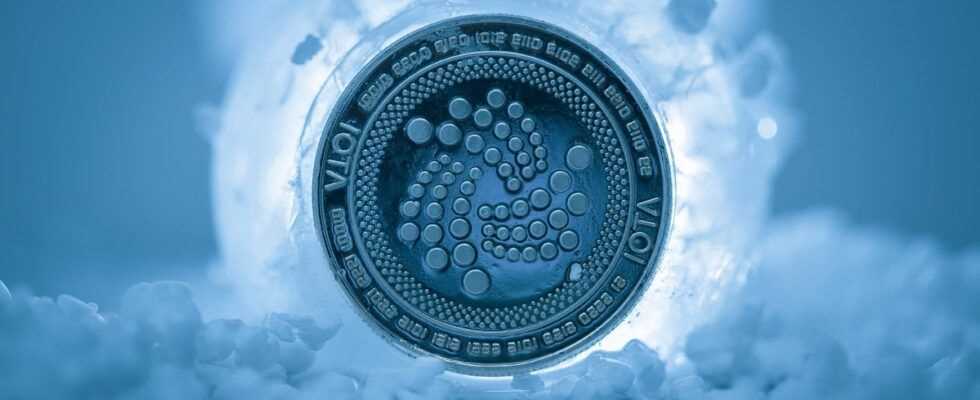IOTA doesn’t just want to provide the technological backbone for the Internet of Things for a long time. With the new NFT marketplace, IOTA is fishing in DeFi waters.
While the IOTA mainnet is still waiting for its final decentralization, applications for IOTA 2.0 are already being tested in the test network Devnet 2.0. With the NFT Marketplace, the IOTA network has now sent its first marketplace for non-fungible tokens into test operation. The IOTA Foundation announced this on July 12th on its blog.
Ethereum’s fee problem
So far, Ethereum has still set the tone in the area of non-fungible tokens. Most NFT exchange platforms rely on the smart contract primus, despite its teething troubles that have mutated into old age and manifest themselves primarily in the poor scalability of the network. The result: A high network load drives up gas prices, i.e. the costs for individual smart contract operations. Especially for small investors: NFT trading on Ethereum can become an expensive pleasure during peak loads. There are plenty of possible solutions – from Layer 2 networks such as Polygon, which relieve the Ethereum Blockchain, to the upcoming London update and the planned switch to Proof of Stake, there are many signs that the ETH fees will not be paid in the foreseeable future only more predictable (London) but also lower. In some cases, the effects of Layer 2 solutions are already noticeable. Gas prices have been at a comparatively low level since the end of May.
Nonetheless, the gas fees still add up to a high amount, especially with more complex smart contract applications, such as are common in the DeFi sector, so that for many, creating NFTs and executing token swaps, yield farming and Co. still cannot be paid for from the postage wallet.
IOTA is known to advertise that its technology, the Tangle, enables fee-free transactions. The project aims to provide nothing less than the technological backbone of the Internet of Things. But IOTA has long since expanded its focus and is increasingly focusing on the (decentralized) financial sector. IOTA’s NFT marketplace, which has now gone into test operation, is the latest example of this development.
What IOTA wants to do better with its NFT marketplace
The same logic with which IOTA wants to revolutionize the IoT sector can also be transferred to the platform’s NFT ambitions. Among other things, it is about the waiver of fees to lower the threshold for the entry of new network participants: inside. This includes not only the potential buyers of NFT, but also the creators, such as visual artists or musicians. However, the IOTA NFT marketplace is not entirely for free. On the IOTA blog it says:
Transactions are always free of charge in the IOTA network, so this barrier is already gone. Minting fees are also negligible due to the IOTA Digital Assets Framework. Only the commission for the IOTA NFT marketplace remains, as the infrastructure has to be supplied with electricity in some form. All in all, the NFT solution, which is based on the IOTA network, will be significantly cheaper than any other existing solution and therefore more attractive for all market participants.
Source: IOTA blog
Of course, the question of decentralization arises here. Who runs the marketplace? Who do the fees go to? Who will take over the custody of the crypto assets? The IOTA Foundation explains that the test version of the NFT marketplace is a centralized interim solution. This means that funds are held in a custodial wallet, similar to centralized Bitcoin exchanges à la Binance, Coinbase and Co. IOTA’s NFT marketplace can be found below this link try already. As already indicated, this is an MVP that has fundamental changes in the house. In addition to rebranding, this includes the implementation of IOTA smart contracts and the integration of browser wallets, which are intended to replace the previously centralized crypto custody.
